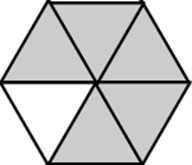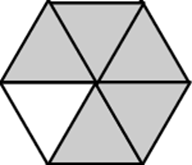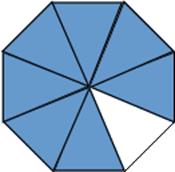Creating a Positive Environment for Practicing Mathematics
Beyond instruction, attention to the classroom atmosphere is important. Learners need to feel safe sharing their partial understandings. The classroom environment should discourage shame and negative mathematical image. Motivation and engagement can be fostered by paying attention to the joy, play, wonder and curiosity of learning and doing mathematics. Similarly, social connections and discourse are important for creating a positive environment. Learning environments where students collaborate and cooperate to solve interesting problems are powerful, engaging, interesting and motivating (Jacobson and Wilensky 2006; Wilensky 1997).
Instruction needs to permit multiple ways of knowing and represent mathematical concepts in different domains. For example, the fraction 5/6 can be represented (see below) as a geometric region, a discrete set or on a number line.
Geometric region |

|
Discrete set |

|
On a number line |

|
Concepts like equivalence and relative size can be explored to connect and formalize understandings about fractions and decimals. For example, which fraction is larger: 5/6 or 7/8? Getting students to explore multiple representations of the fractions as geometric shapes, discreet sets or a point on a number line can help build understandings (Behr and Post 1992).
|
5/6 |
7/8 |
Geometric region |

|

|
Discrete set |

|

|
On a number line |

|

|

|





